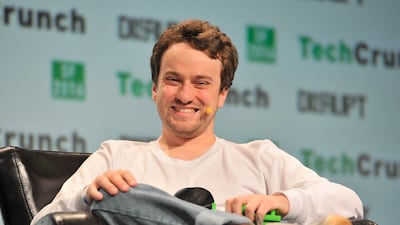So much of the news surrounding Twitter since it was acquired by Elon Musk for $44 billion at the end of last month has centred on the mass job cuts.
But while thousands of staff headed for the exit door, there has been a standout tale of someone heading into the building.
George Hotz has been in the public eye before, having become the first person to jailbreak an Apple iPhone in 2007.
And now the tech world is taking notice of him again as he attempts to make Twitter a better functioning application under the watch of the world's richest person.
How did he come to be at Twitter?
It started on November 16 when Mr Musk's email to Twitter staff telling them he only wanted those prepared to work "hardcore" to remain entered the public domain.
Mr Hotz, 33, responded to a tweet containing a copy of Mr Musk's email by saying "this is the attitude that builds incredible things. Let all the people who don’t desire greatness leave".
He followed it with another tweet saying: "I’ll put my money where my mouth is. I’m down for a 12-week internship at Twitter for cost of living in SF. It’s not about accumulating capital in a dead world, it’s about making the world alive."
Mr Musk was paying attention and responded, "Sure, let's talk".
Mr Hotz clarified that he was good at optimisation and quickly understanding large code bases and was willing to start on Monday in office. Twitter staff had been ordered by Mr Musk to return to the office only days earlier.
What exactly is he doing at Twitter?
He started by live streaming a video explaining how Twitter works, which involved a lot of technical talk and on-screen code. The video has been watched almost 550,000 times on Twitter.
He's been tasked with improving Twitter's search function and said he would "try my hardest to do it".
"Also trying to get rid of that nondismissable login pop up after you scroll a little bit ugh these things ruin the Internet," he tweeted, adding: "If I just get rid of the pop up, I still consider my internship a win."
He said the second task on his list was to let users search their likes on the platform. "If both those can get done in the first two weeks, I think we are on track for great things," he tweeted.
Mr Hotz invited Twitter users to help him with his work and discussed the technicalities of what he was trying to do.
He did, however, receive some negative feedback and responded that he's "here to learn things". Mr Musk chimed in with "Welcome to Twitter".
What was Mr Hotz doing before his Twitter internship?
He was president of automated driving technology company comma.ai and also the founder of neural network company the tiny corp.
His LinkedIn page shows that he was an intern on three occasions at Google, at Mr Musk's SpaceX in 2013 and he spent eight months as a software engineer at Facebook in 2011.
He studied at Rochester Institute of Technology and Carnegie Mellon University.
Have he and Mr Musk crossed paths before?
Yes, in 2015, he built a self-driving car in his own garage and took a Bloomberg reporter for a drive in it. "Don't touch any buttons or we'll die," he was quoted as saying.
Mr Hotz and Mr Musk reportedly met at Tesla’s factory in Fremont, California, and there was a proposal that if Mr Hotz could better the Mobileye technology Tesla was using, he would be given a big contract.
However, the talks broke down and Mr Musk told Mr Hotz he should "just work at Tesla". But Mr Hotz was "not looking for a job".
Tesla then issued a statement rebutting the content of the Bloomberg article.
"We think it is extremely unlikely that a single person or even a small company that lacks extensive engineering validation capability will be able to produce an autonomous driving system that can be deployed to production vehicles," it said.
"It may work as a limited demo on a known stretch of road — Tesla had such a system two years ago — but then requires enormous resources to debug over millions of miles of widely differing roads."
Elon Musk memorabilia auctioned by ex-girlfriend for $165,000























